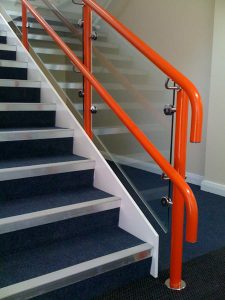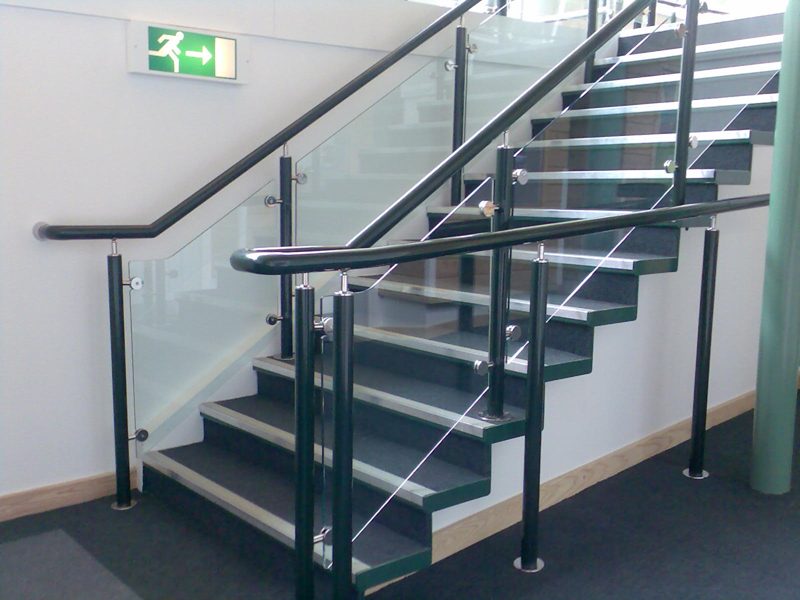Handrails are necessary to provide support and guidance to users of stairs and therefore need to be firmly supported. Balustrades provide pedestrian safety by guarding and preventing falls from height. The two purposes are generally combined into one component assembly. Stairs need continuous handrails to both sides of stairs, including any landings.
What is required from a handrail in a school?
Handrails are important to enable tactile guidance, physical support and reassurance. There are several requirements of handrails in order to create a safe environment for all. Handrail design is comprehensively covered in ADM.
Visibility is an important factor in schools, stairs should have contrasting nosings and treads, and risers should be clearly distinguishable from each other. In addition, handrails should also have a clear visual contrast with their background without being highly reflective. A handrail is required to level out at each landing, as an indicator to the visually impaired that the floor is about to become level. The DCSF will expect that a secondary handrail is included at a lower level where it is safe to do so. This would reassure and support not just younger students.
Regulations for school handrails
 Building Regulations also specify certain requirements from handrails for schools. The profiles of handrails should be either circular with a diameter of between 40 and 45mm, or oval preferably with a width of 50mm. Handrails must not protrude more than 100mm into the surface width of the ramped or stepped access where this would impinge on the stair width requirement of Part B1.
Building Regulations also specify certain requirements from handrails for schools. The profiles of handrails should be either circular with a diameter of between 40 and 45mm, or oval preferably with a width of 50mm. Handrails must not protrude more than 100mm into the surface width of the ramped or stepped access where this would impinge on the stair width requirement of Part B1.
There must be a clearance of between 60mm and 75mm between the handrail and any adjacent wall surface. Building Regulations require that any handrail is 900 -1000mm above the nosing line of stairs and 1100mm at landings. Pedestrian Guarding in schools must be 1100mm above finished floor level. In schools with pupils aged 12 or under DCSF prefer an additional lower handrail, say at 600mm for infants and people of small stature.
Balustrades must be designed to prevent students from climbing up towards the handrail. You should avoid horizontal rails in balustrade design; any opening should prevent a 100mm sphere to pass through. Detailed guidance is available in CP BS 6180:1999 Barriers In And About Buildings. Finishes for handrails/balustrades must be chosen to contrast with the background that they will be viewed against and must not be highly reflective.
For more information on school handrail specifications please visit handrails https://www.handrailsuk.co.uk


